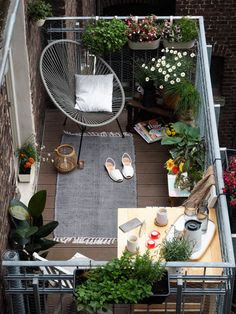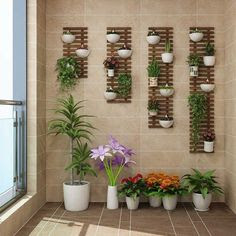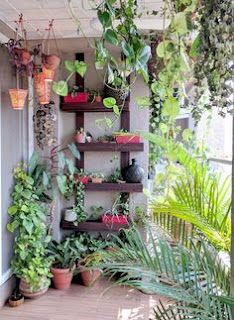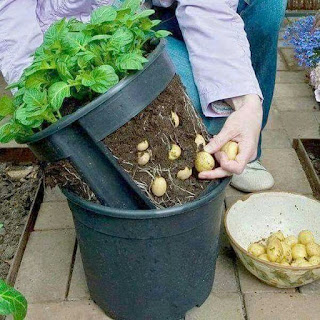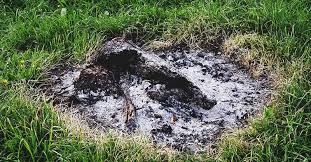Home gardening and more is an exclusive blog site for gardening and home decor, gardening ideas, gardening tips, gardening hacks and other related protips that you will not commonly find. These gardening tips, gardening ideas and gardening hacks are the ones that have been implemented and tested with proven results.
Labels
Thursday, May 20, 2021
Tuesday, May 18, 2021
20 small balcony garden ideas for home
Garden ideas for home:
Most of us who live in apartments love to have a garden, but space constraint is one of the major blocks that makes it almost impossible. One good idea to make this dream of having a garden come true for those who live in cities and highly crowded apartments is to make a small balcony garden. When it comes to garden ideas for home, interesting and attractive ideas are always sought for.
These garden ideas are easy to implement DIY garden projects with a minimal budget. Terrace garden ideas for home are also becoming more and more popular. But, those who cannot implement the roof garden idea for home, such as those living in a rental house or in an apartment can go for balcony garden ideas for home.
Small balcony garden ideas for home:
There are various garden design ideas including vertical garden ideas for home. Here are 20 best, attractive easy to make small balcony garden ideas for home.
The creepers that can be planted in y our balcony space will add shade and green look to your balcony, giving it a park like look to your home.
Monday, May 17, 2021
Plant propagation techniques - How to propagate plants from hardwood cuttings.
Plant propagation is an extremely interesting process for gardeners, as it creates a lush thick look with more plants all free of cost. But, propagating plants successfully has been a challenge to gardeners till date. There are various factors that play a role in successful propagation of plants. But, choosing the right cutting is the most important thing when it comes to propagating plants from cuttings.
Here we will see about propagation of plants through hardwood cuttings. The in-depth process of plant propagation techniques using hardwood cuttings has been given here. Following these gardening techniques and gardening tips will lead to successful growth of new plants from plant cuttings.
Hardwood cuttings are even simpler to prepare than softwood or herbaceous cuttings, as we use cuttings from dormant deciduous trees and woody plants, and this technique is very useful for propagating fruit trees such as figs, pomegranates, mulberries and quince. Some plums can grow well from hardwood cuttings too, while other’s don’t do so well, it depends on the variety.
This technique is also used for propagating vines such as grapes and kiwi fruit, and the currant family – blackcurrants, redcurrants, golden currants and gooseberries.
Step by step process to propagate plants from hardwood cuttings.
Kind of stem cutting to be used for various types of plants:
When it comes to stem cuttings, there are are various types of stem cuttings, and for each plant, the kind of stem cutting that has to be chosen varies. The type of stem cuttings are to be decided based on whether it is a herb, shrub, tree or indoor plant. Also certain stem cuttings are easy to root and thus easy to propagate. Whereas certain stem cuttings such as semi hardwood plant cuttings and hardwood plant cuttings are quiet difficult to root and propagate. They also take a longer tie period to root.
Herbaceous cuttings are made from non-woody, herbaceous plants such as coleus, chrysanthemums, and dahlia. A 3- to 5-inch piece of stem is cut from the parent plant. The leaves on the lower one-third to one-half of the stem are removed. A high percentage of the cuttings root, and they do so quickly.
Softwood cuttings are prepared from soft, succulent, new growth of woody plants, just as it begins to harden (mature). Shoots are suitable for making softwood cuttings when they can be snapped easily when bent and when they still have a gradation of leaf size (oldest leaves are mature while newest leaves are still small). For most woody plants, this stage occurs in May, June, or July. The soft shoots are quite tender, and extra care must be taken to keep them from drying out. The extra effort pays off, because they root quickly.
Semi-hardwood cuttings are usually prepared from partially mature wood of the current season’s growth, just after a flush of growth. This type of cutting normally is made from mid-July to early fall. The wood is reasonably firm and the leaves of mature size. Many broadleaf evergreen shrubs and some conifers are propagated by this method.
Hardwood cuttings are taken from dormant, mature stems in late fall, winter, or early spring. Plants generally are fully dormant with no obvious signs of active growth. The wood is firm and does not bend easily. Hardwood cuttings are used most often for deciduous shrubs but can be used for many evergreens. Examples of plants propagated at the hardwood stage include forsythia, privet, fig, grape, and spirea.
Here is an in-depth information on which kind of stem cutting has to be taken for the most common plant varieties.
How to propagate plants successfully like a pro - Gardening tips for Plant propagation.
Propagation has been the most looked out method for multiplying plants as we would like to fill our garden space with beautiful plants in an cost-effective manner. Multiplying the plants in our garden and balcony, to give that jungle look to our living space, using plant propagation, has also become trending among young gardeners.
Moreover, Propagating plants can easily add more plants to either your indoor or outdoor collections.
There are various methods of plant propagation and propagating plants through cuttings is one of the easiest and cost effective methods.
When it comes to Growing new plants through plant cuttings, it can either be through stem cuttings, leaf cuttings, or root cuttings.


Now we will see about the process and few plants that can be propagated through stem cuttings. The list will include a mix of indoor and outdoor plants.
When it comes to stem cuttings the kind of stem can be categorised as
1. Herbaceous
2. Softwood
3. Semi hardwood
4. Hardwood
Herbaceous stem cuttings:
These are done for herbaceous plants that are non - woody.
Herbaceous stem cutting propagation method can be used for Coleus propagation, Chrysanthemum propagation, Philodendron propagation, propagating Impatiens, propagating Poinsettias, wandering Jew propagation and Dahlia propagation. Rosemary cuttings are very easy to propagate. Thyme and mint propagation can also be done from herbaceous stem cuttings.
Softwood stem cuttings:
These are the soft, succulent, young, stem cuttings from woody plants. These softwood of the plant will snap when bent and will also have leaves that are not yet fully mature.
The bending test is the best method for finding the right softwood for plant propagation.
New growth will generally be greenish and will not break easily when bent.
Soft wood will easily break when bent and this is just right for propagation of plants through stem cuttings.
Hardwood will not break easily.
Some plants that can be propagated through softwood stem cuttings are, coleus, gardenia, geranium, hibiscus, lilac, salvia, etc. Hydrangea cuttings, lavender cuttings, jade plant cuttings,
Semi hardwood cuttings:
Semi hardwood cuttings are collected from the stem that has grown in that season, but has hardened and matured.
These stems will have leaves of full size.
Semi hardwood cuttings take longer to form roots.
Some plants that can be propagated using semi hardwood cuttings are Coprosma (taupata), camellia, azalea, New Zealand broadleaf (Griselinia), hebe, Fuschia, Leucodendron, boxwood, rhododendron and holly.
Hardwood cuttings:
Hardwood cuttings are nearly 1 inch in width and are taken from stems that have grown the previous season. They are not easy to break.
Examples of plants that can be grown from hardwood cuttings are figs, Pomegranates, mulberries, grapes, gooseberries etc.
Here is the exact process of propagating plants from stem cuttings.
Sunday, May 16, 2021
Want to grow huge amounts of potatoes successfully in containers at home? - Then you must definitely know this.
Most of us like to grow our own veggies and this trend is rising all over the world. Potatoes are one of the most commonly considered vegetable to grow at home. Potatoes though considered to be grown easily, has some nutrient requirements based on the stages of growth. Knowing these gardening tips and nutrient requirements will help you grow potatoes as a pro.
Whether it is growing potatoes in containers or direct ground, these are certain things that you should definitely know.
This diagram demonstrates the different growing stages of potatoes.
Understanding these stages are important for understanding nutrient and fertilizer management.
Click here for In-depth information on nutrients for successfully growing huge amounts of potatoes at home
Growing potatoes successfully at home requires an wide array of knowledge right from, information on the right season for growing potatoes, the soil mix for growing potatoes at home, the right container size for growing potatoes etc.
It is possible to grow potatoes in any large container, from large pots or nursery containers to big garbage cans. Even trash bags or stacks of tires will do, though you have to be cautious about these because they can get very hot in the sun. Here is all about growing potatoes at home.
Thursday, May 13, 2021
Highly effective homemade fertilizer for your vegetable garden - Gardening tips and Gardening ideas.
Mostly your vegetable plants and fruit plants require a wide range of nutrients, and potassium is one of the most important nutrients out of the three major ones. We will see about an easy to make homemade fertilizer that can supply your plants, especially vegetable plants in your terrace garden or balcony garden with high amounts of potassium and also other vital nutrients.
Most of us generally get this fertilizer at home on a daily basis, but tend to neglect it because of not knowing its uses for plants. This is none other than wood ash. Yes, when you burn wood for any purpose, it leaves out ashes and these ashes are rich sources of nutrients for your plants.
Nutrients in wood ash which makes it a good homemade fertilizer for your garden:
Even if you don’t burn wood at home regularly, it is a very good option to burn wood just for the purpose of getting a fertilizer that enhances the flowering and fruiting of your plants. Wood ash contains a good amount of potassium and Phosphorus, which are highly essential for plant growth. Wood ash also contains micronutrients such as calcium, zinc, manganese and iron, which are essential for healthy plant growth.
Let’s see how to use this wood ash for your plants. There are 3 common ways of using wood ash for your garden. Each one has its own uses.
1. Using wood ash in compost:
Wood ash can be mixed with either your kitchen compost or your vermicomposting. If you are using wood ash along with your kitchen compost you can add a thin layer of wood ash for every 6 inches of your compost pile.
Uses of wood ash in compost:
Wood ash is alkaline in nature and thus it tends to reduce the acidity of the compost. Once the acidity is reduced, the worms can easily work on your compost and help it to decompose faster. This kind of compost that is less acidic is very suitable for mulching your vegetable plants in the garden. The compost that is made with adding wood ash to it is also richer than the general kitchen compost as they have the worm decomposed nutrients in it.
2. Using wood ash directly in your garden soil:
Most of the vegetable plants generally require a soil pH of about 6.5 to 7.0, if your soil is below 6.5, then it is highly recommended to add wood ash to the soil directly as it would balance the soil’s nature. Moreover, if you use lot’s of cattle manure in your garden soil, then it is highly useful to add wood ash, because cattle manure tends to make the soil acidic.
You can also add wood ash in your potting mix when you are potting a new plant or while repotting.
3. Adding wood ash around the plants:
Plants such as cabbage, Brussels and fruit bushes that love alkaline soil can be given a side dressing with wood ash. This also prevents club root formation in plants which is mostly common in acidic soil.
Caution - if using wood ash:
Wood ash is not to be used for acid loving plants such as berries and potatoes, especially, blueberries and raspberries need acidic soil for maximum growth and production.
Related Posts
-
Baking soda, the commonly available kitchen ingredient can be used for your plants and garden in multiple of ways due to its immense benefit...
-
Caring for tomatoes throughout the growing season is highly essential and following these tips will help you maximise the harvest while min...
-
Grow bags made of fabric are becoming more nad more popular. When compared to the regular Terracotta plant pots and the plastic planters the...
-
Plant nutrients and it's importance: Plants, just like us need nutrients and having great interest in gardening, we would have definite...
-
Propagating plants at home from the mother plant is highly useful to make more genetically identical plants that resemble the parent and is ...
-
When it comes to growing tomatoes successfully, one major problem that we face is a good plant with lots of lush foliage, and flowers, but ...
-
Creating a beautiful garden is a great passion for almost everyone. Gardening tips and gardening ideas for home are always sought out inorde...
-
Gardening is an evergreen hobby for almost everyone. More and more youngsters are getting interested in gardening, and organic gardening ha...
-
Using homemade fertilizers for the garden has become an area of interest for almost every gardener. Gone are the days when we need to look ...
-
Most of the times we tend to pull out the seedlings that grow along with the weeds. This is what I did to my little lettuces that was growin...










